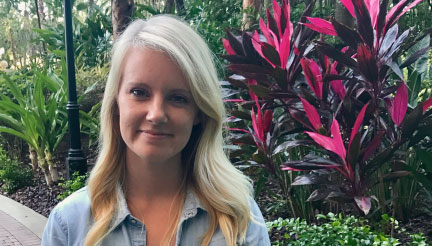Reflections on my time as TCP Program Coordinator
By Elaina Johns-Wolfe
About two years ago, I began my assignment as graduate assistant for the Kunz Center for Social Research, of which Dr. Jennifer Malat was director. The Cincinnati Project was only in its infancy at the time — more of an idea than a cohesive research center. Over the course of the next year and a half, it was my privilege to serve as its first project coordinator and to help it grow into a stand-alone research endeavor. As a sociologist-in-training, involvement with The Cincinnati Project enriched my education in the following ways:

Applying Classroom Material
Over several years spent among social science professors and students, I’ve observed that most are drawn to their respective discipline because of an interest in social justice. In the classroom, we are taught grand theories of social inequality and methods for inquiry, but the contribution of these theories and methods do not always translate clearly into social change. This is why The Cincinnati Project is important.
For instance, I incorporated a TCP project into my summer online teaching assignment. The students compiled Census data of a Cincinnati ZIP Code and its Census tracts into a demographic profile for CAIN. Through this assignment, students gained experience reading and interpreting tables and maps, appreciation for demography as a tool, knowledge of racial and income segregation at multiple scales, and a better understanding of their local community and its needs. They are also able to answer the age-old question “what can you do with a degree in sociology?” at family reunions. In turn, CAIN hopes to use this information to better understand their guests and to aid in funding applications. While seemingly a small task, even projects like these make a difference.
Working with Community Partners
The need and want for TCP was quickly apparent. Non-profits and community organizers are in a unique position because they have a deep understanding of local inequities, but many times do not have the resources, time, or research expertise to explore certain topics. After a meeting between two community partners in January 2016, an email about TCP was circulated among a listserv of several non-profit organizations. Within a few days, my inbox was flooded with inquiries. I met with community partners, created a database of profiles and research needs, and, with the Directors’ help, began to match partners with faculty members.
Meeting with community partners was the highlight of my job. Following Dr. Malat’s advice, I encouraged the community partners to help us with an exhaustive research wish list of research that would help the community. In one meeting, I took five pages of notes. I found this stage of the process to be vital in meeting TCP’s goal of engaging community partners as equal stakeholders in the research project.
I can’t wait to see what the future of The Cincinnati Project holds. Under the leadership of Drs. Jennifer Malat, Earl Wright II, and Farrah Jacquez, TCP has grown into a mutually-beneficial research endeavor for faculty, students, community partners, and most importantly, the community. I have no doubts that the enthusiasm will continue to grow.
